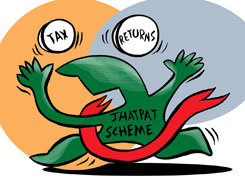Nayagam P P |3654 Answers |Ask -Follow
Career Counsellor - Answered on Jul 23, 2024
He started his career as an HR professional and has over 10 years of experience in tutoring and mentoring students from Classes 8 to 12, helping them choose the right stream, course and college/university.
He also counsels students on how to prepare for entrance exams for getting admission into reputed universities /colleges for their graduate/postgraduate courses.
He has guided both fresh graduates and experienced professionals on how to write a resume, how to prepare for job interviews and how to negotiate their salary when joining a new job.
Nayagam has published an eBook, Professional Resume Writing Without Googling.
He has a postgraduate degree in human resources from Bhartiya Vidya Bhavan, Delhi, a postgraduate diploma in labour law from Madras University, a postgraduate diploma in school counselling from Symbiosis, Pune, and a certification in child psychology from Counsel India.
He has also completed his master’s degree in career counselling from ICCC-Mindler and Counsel, India.
... more

Sir I have to take loan for lpu of 7 lakhs . Is it really worth it? In lnct there is no loan required. Please sir suggest me something good.
You may like to see similar questions and answers below
Radheshyam Zanwar |807 Answers |Ask -Follow
MHT-CET, IIT-JEE, NEET-UG Expert - Answered on Aug 03, 2024
Ramalingam Kalirajan |6240 Answers |Ask -Follow
Mutual Funds, Financial Planning Expert - Answered on Jul 25, 2024
Dr Dipankar Dutta |555 Answers |Ask -Follow
Tech Careers and Skill Development Expert - Answered on Jul 29, 2024
Ramalingam Kalirajan |6240 Answers |Ask -Follow
Mutual Funds, Financial Planning Expert - Answered on Aug 12, 2024
Ramalingam Kalirajan |6240 Answers |Ask -Follow
Mutual Funds, Financial Planning Expert - Answered on Aug 21, 2024
Dr Dipankar Dutta |555 Answers |Ask -Follow
Tech Careers and Skill Development Expert - Answered on Sep 08, 2024
Dr Dipankar Dutta |555 Answers |Ask -Follow
Tech Careers and Skill Development Expert - Answered on Sep 08, 2024
Dr Dipankar Dutta |555 Answers |Ask -Follow
Tech Careers and Skill Development Expert - Answered on Sep 08, 2024
Dr Dipankar Dutta |555 Answers |Ask -Follow
Tech Careers and Skill Development Expert - Answered on Sep 08, 2024
Milind Vadjikar |62 Answers |Ask -Follow
Insurance, Stocks, MF, PF Expert - Answered on Sep 07, 2024
Milind Vadjikar |62 Answers |Ask -Follow
Insurance, Stocks, MF, PF Expert - Answered on Sep 07, 2024
Milind Vadjikar |62 Answers |Ask -Follow
Insurance, Stocks, MF, PF Expert - Answered on Sep 07, 2024
Milind Vadjikar |62 Answers |Ask -Follow
Insurance, Stocks, MF, PF Expert - Answered on Sep 07, 2024
Milind Vadjikar |62 Answers |Ask -Follow
Insurance, Stocks, MF, PF Expert - Answered on Sep 07, 2024
Milind Vadjikar |62 Answers |Ask -Follow
Insurance, Stocks, MF, PF Expert - Answered on Sep 07, 2024

























